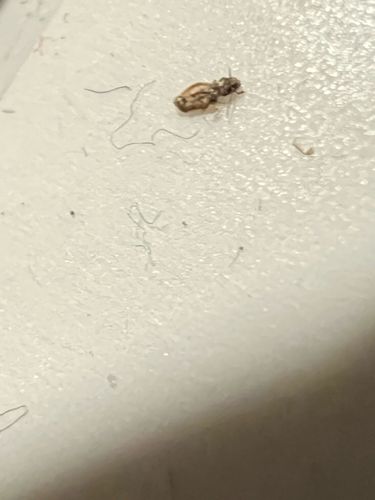Booklouse / Psocid
Scientific Name: Psocoptera (order), various genera
Order & Family: Order: Psocoptera, various Families (e.g., Liposcelididae, Psocidae)
Size: 1-2 mm

Natural Habitat
Damp, warm, and dark environments, often found in books, papers, stored food products, walls, and other places with high humidity and mold growth.
Diet & Feeding
Fungi, mold, starch, paste, glues in books, dead insects, and other organic debris. They are scavengers.
Behavior Patterns
They are small, soft-bodied insects that are generally harmless. They are attracted to humidity and feed on microscopic mold and fungi. They move quickly but are not known to jump or fly (though some species are winged). They can reproduce rapidly under favorable conditions.
Risks & Benefits
Potential risks include damage to books, documents, and stored food products due to their feeding habits, especially if infestations are large. They are generally not harmful to humans directly, do not bite, and are not known to transmit diseases. They can indicate a high humidity problem in a dwelling. They provide a benefit by feeding on mold and fungi, acting as natural decomposers.
Identified on: 10/15/2025